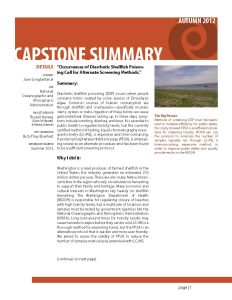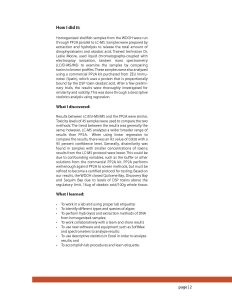← Back to all capstone projects
Occurrences of Diarrhetic Shellfish Poisoning Call for Alternate Screening Methods
Diarrhetic shellfish poisoning (DSP) occurs when people consume toxins created by some species of Dinophysis algae. Common sources of human consumption are through shellfish and crustaceans—specifically mussels, clams, oysters or crabs. Ingestion of these toxins can cause gastrointestinal illnesses lasting up to three days; symptoms include vomiting, diarrhea, and fever. It is essential to public health to regulate toxicity levels, but the currently certified method of testing, liquid-chromatography mass- spectrometry (LC-MS), is expensive and time-consuming. A protein phosphatase inhibition assay (PP2A), is undergoing review as an alternate procedure and has been found to be a sufficient screening protocol.

